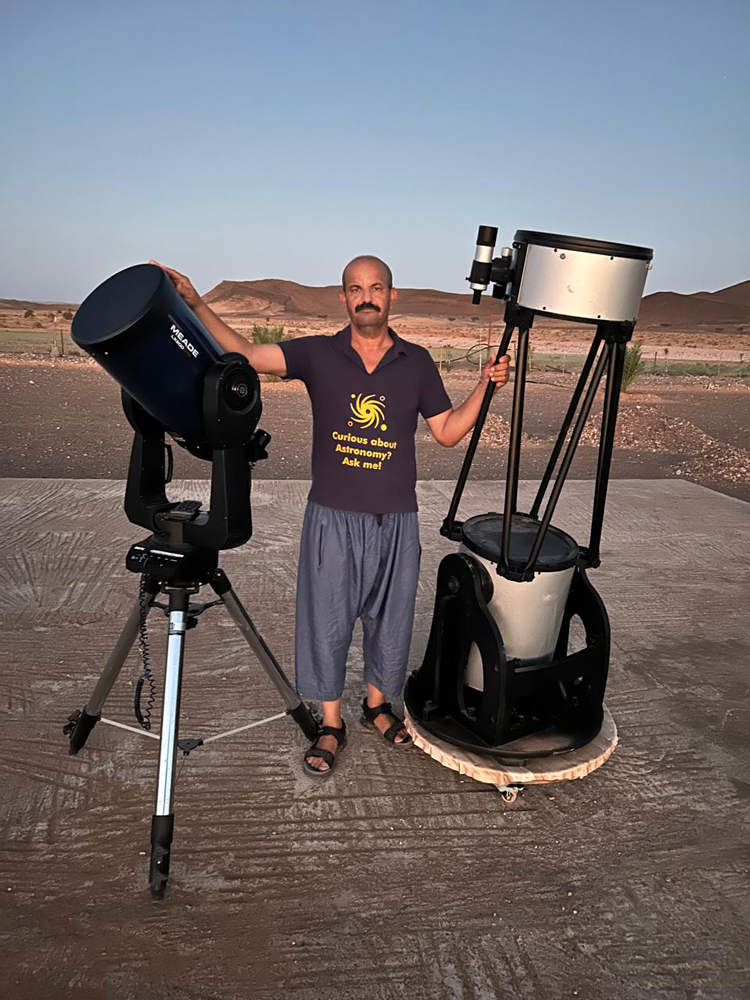Astronomy in Everyday Life: How the Stars Shape Our World
For millennia, humans have been captivated by the night sky, drawn to the mysteries of the stars and the celestial bodies that dot the heavens. But astronomy isn’t just an ancient curiosity or the subject of modern scientific research—it plays a fundamental role in shaping our everyday lives. From guiding navigation and marking time to inspiring art, religion, and technology, the influence of the stars reaches into many aspects of human civilization.
In this blog, we’ll explore how astronomy is woven into our daily existence, influencing everything from the tools we use to how we view our place in the universe.
The Ancient Roots of Astronomy
Astronomy is often referred to as the oldest science. Long before telescopes, satellites, and space missions, ancient civilizations looked to the stars to make sense of the world around them. Early astronomers, from the Babylonians and Egyptians to the Greeks and Chinese, observed the movements of celestial bodies to develop calendars, predict eclipses, and understand the seasons.
These early astronomers weren’t just looking at the stars for academic purposes. The skies guided crucial aspects of life:
- Agriculture: The timing of planting and harvesting was often determined by the position of the sun and stars. In Egypt, for instance, the appearance of the star Sirius in the sky heralded the annual flooding of the Nile River, signaling the start of the growing season.
- Timekeeping: Ancient people used the movements of the sun, moon, and stars to create calendars. The Mayan Calendar, the Chinese lunar calendar, and even our modern Gregorian calendar are all rooted in astronomical observations.
- Navigation: Before the advent of compasses and GPS systems, mariners relied on the stars to navigate across oceans. The North Star, or Polaris, is perhaps the most famous navigational star, used by sailors for centuries to find their way home.
Timekeeping: Astronomy and the Calendar
One of the most tangible ways astronomy shapes our daily lives is through timekeeping. Our entire system of measuring time—days, months, and years—depends on celestial mechanics.
The Solar Day
A day is defined by the rotation of the Earth on its axis, taking approximately 24 hours. This rotation gives us the cycle of day and night, governed by the sun’s position in the sky. It’s something we experience every day without thinking, but it’s a direct result of astronomical forces.
The Lunar Month
The months of the calendar, particularly in earlier systems, were often based on the phases of the moon. A lunar month is approximately 29.5 days long, representing the time it takes the moon to orbit the Earth. Although modern calendars don’t perfectly match the lunar cycle, many cultural and religious calendars still do—such as the Islamic calendar, which follows a lunar year.
The Solar Year
Our concept of the year is defined by the Earth’s orbit around the sun, taking about 365.25 days. This orbit gives us the changing seasons, which have guided human activity for thousands of years. Without astronomy, we wouldn’t be able to track these cycles with the precision needed for everything from agriculture to planning festivals and holidays.
Navigation: Stars as Earth’s GPS
Before the invention of modern navigation tools like compasses and GPS, ancient travelers and sailors relied on the stars to find their way. Navigating by the stars is one of the oldest uses of astronomy in everyday life, and it was crucial for long-distance travel, particularly at sea.
The North Star (Polaris)
One of the most important navigational stars is Polaris, also known as the North Star. It sits almost directly above Earth’s North Pole, meaning it hardly moves in the night sky and remains a fixed point. For centuries, sailors in the Northern Hemisphere used Polaris to navigate, as it provided a reliable marker for finding true north.
Celestial Navigation
Beyond Polaris, sailors would use other constellations and celestial bodies to orient themselves. The movement of the sun and stars across the sky allowed them to determine their latitude and approximate location. Even today, celestial navigation is still taught as a backup method in case modern technology fails.
Astronomy and Modern Technology
While ancient uses of astronomy were primarily for timekeeping and navigation, the influence of astronomy extends to modern technology in ways that often go unnoticed. The precise understanding of celestial mechanics is at the heart of many technologies we rely on today.
Satellites and GPS
The GPS (Global Positioning System) that we rely on for navigation is based on principles of astronomy and orbital mechanics. Satellites orbit the Earth and communicate with devices on the ground to triangulate precise locations. Understanding the Earth’s rotation and position in space is crucial for this technology to work.
Communication and Broadcasting
Satellites used for communication, broadcasting, and internet services also depend on accurate knowledge of orbital patterns and astronomy. Without our understanding of how objects move in space, these vital systems wouldn’t be possible.
Astronomy’s Role in Advancing Physics
Many breakthroughs in physics and technology have been driven by astronomical research. Einstein’s theory of relativity, which underpins modern physics and GPS technology, was confirmed through observations of stars and the bending of light during a solar eclipse. Our understanding of quantum mechanics, nuclear fusion, and even the development of computers has been accelerated by our exploration of the cosmos.
Cultural and Spiritual Connections to the Stars
Astronomy has shaped not only our scientific understanding of the universe but also our cultural and spiritual lives. Across cultures, the stars have been woven into mythology, religion, art, and philosophy.
Mythology and the Constellations
Many ancient cultures saw stories and gods reflected in the constellations. The Greek myths of gods, heroes, and monsters are still familiar to us today, with constellations like Orion, Cassiopeia, and Hercules named after figures from mythology. These stories helped ancient people explain natural phenomena and find meaning in the vastness of the universe.
Astrology’s Influence
Astrology, though not scientifically validated, has played a significant role in shaping human history. Many ancient civilizations believed that the positions of the stars and planets could influence human affairs. While modern astronomy separates itself from astrology, the cultural and historical significance of this belief system cannot be denied.
Religion and the Stars
In many religions, the stars and the cosmos are seen as reflections of the divine. Ancient Egyptians built their pyramids with celestial alignments in mind, while the ancient Mayans created complex calendars based on the movements of the planets. Even in modern times, astronomical events such as eclipses or meteor showers often carry symbolic meanings in various cultures and spiritual practices.
Astronomy and Art
The stars have always inspired human creativity, from early cave paintings of constellations to the works of famous artists like Vincent van Gogh, whose iconic painting Starry Night was inspired by the night sky. Today, astronomy continues to inspire photographers, filmmakers, and writers who seek to capture the beauty and mystery of the universe.
Astronomy’s Role in the Future
As we move further into the 21st century, astronomy’s influence on everyday life is only growing. Our quest to understand the cosmos has led to innovations in technology, communication, and even medicine. The future of space exploration, with missions to Mars and beyond, promises to deepen our connection with the stars and possibly even expand humanity’s reach beyond Earth.
The Stars Above, The World Below
Astronomy has always been more than just the study of distant stars and galaxies—it is a science that directly impacts life on Earth. From the rhythm of our daily lives governed by the movements of the sun and moon to the technology that keeps us connected, the influence of the stars is profound and enduring. As we continue to look to the heavens, we are reminded that the cosmos is not just a distant place but a fundamental part of our world, shaping our past, present, and future.
So the next time you glance up at the night sky, remember that astronomy isn’t just a study of faraway stars—it’s a science that plays a key role in your everyday life.


